
Memory Machines: The Evolution of Hypertext
by
Belinda Barnet
Published 14 Jul 2013
Stuart Moulthrop read the whole book and provided comments, as well as a beautiful foreword. I’d like to thank Michael for permission to use his personal photos from the late ’80s and for a copy of his unpublished manuscript Re:mindings, which I cite in this chapter. Doug Engelbart sat for an interview in 1999. Bill Duvall, a member of Engelbart’s original team at SRI, also donated his time for an interview in 2011, and provided feedback on the NLS chapter. Thierry Bardini, author of the seminal work on Engelbart, Bootstrapping (2000), provided important corrections to this chapter in 2011. On occasion Bardini disagrees with my interpretation, and I have tried to incorporate this dialogue where possible.
…
As technical vision, Memex also incorporated the innovations that were current at the time – for example, microfilm. TECHNICAL EVOLUTION 9 The most influential demonstration in computing history is, of course, Doug Engelbart’s 1968 demo of NLS. But as one of the original members of Engelbart’s Augmentation Research Centre (ARC) at the Stanford Research Institute, Bill Duvall, put it in an interview with the author: The one thing I would say – and this isn’t just true about NLS, this is true about innovation in general – is that […] sometimes just showing somebody a concept is all that you have to do to start an evolutionary path. And once people get the idea of ‘hey we can do that’, then somebody does something, somebody does something better, that just keeps developing.
…
Bardini is right in one important sense: as we shall presently discover, Engelbart’s system imposed a general hierarchical structure on all content. Every item had a section header, and underneath that would be some text, and underneath that some subtext; in layman’s terms, the system imposed a treelike structure on all content. Though it may seem rigid and modularized at first blush, this structure provided many benefits.4 Bill Duvall, one of the original members of Engelbart’s team at SRI, remembers the hierarchy in our interview: ‘What you would call a paragraph, a “statement”, was sort of the bottom node in the hierarchy. And any time a statement was changed, I think there was a change history kept on that’ (2011). Not only did Engelbart want to sort and refine ideas into this shared structure; he wanted to be able to track the changes and operate upon the data.
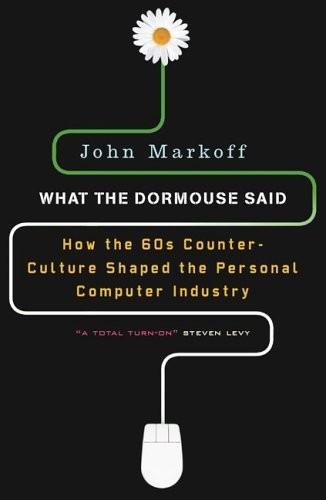
What the Dormouse Said: How the Sixties Counterculture Shaped the Personal Computer Industry
by
John Markoff
Published 1 Jan 2005
But apart from the glare of public notoriety, new tensions had begun to beset the Augment lab. The antiwar movement and the counterculture were now dramatic forces in the Bay Area. The outside world intruded both as political and cultural chaos and in the form of a new wave of skilled software and hardware designers who were drawn to Engelbart’s ideas. Bill Duvall had grown up a couple of miles away from Engelbart’s laboratory. His father was a physicist who worked at SRI. During junior high school, the younger Duvall studied at the Peninsula School, an alternative school that had been attended by Joan Baez and her sister and which had a rich tradition dating back to the 1920s.
…
Both men were single, and both of them also owned the same kind of car—offbeat three-cylinder Saab 96s. They were unusual vehicles in the United States at the time, and their owners tended to have a cult devotion to the machines, which were known for their handling prowess in European sports-car rallies. Shortly after Bill Duvall arrived at Engelbart’s lab, he was joined by a young Berkeley physics student who was also looking for a way to avoid the draft and at the same time find something interesting to do. Harvey Lehtman had graduated from Berkeley, and like Duvall he was a veteran of the Free Speech Movement, having been arrested at Sproul Hall.
…
I want to do this journal, so why don’t you do the detailed design for it?” Unfortunately the idea of a single project didn’t really tame Evans, who continued to veer off in multiple directions, albeit this time on one subject. Ultimately, he wrote a five-hundred-page paper describing all kinds of collections of information. It was left to Bill Duvall to write the code to make the concept a reality. He did it by writing a database that made it possible to create a record of everything that took place on the system. A user could search for documents, group them together, and track changes that were made in each one. Since there was not enough capacity to store the whole journal electronically, it was saved on paper in binders.
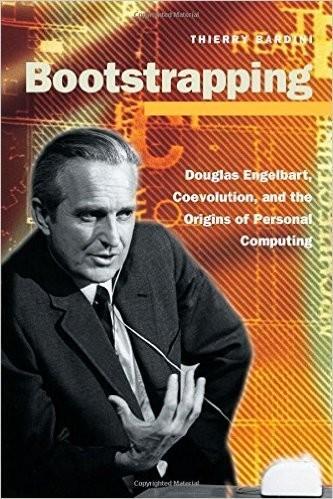
Bootstrapping: Douglas Engelbart, Coevolution, and the Origins of Personal Computing (Writing Science)
by
Thierry Bardini
Published 1 Dec 2000
For Engelbart, P ARC's decision to start over, using the bootstrapping process to develop user- friendliness, was equated with a rejection of the entire ARC experience and the central goal of the Framework for the Augmentation of the Human Intellect. But the rejection in fact was not total. Most of my interviewees took part in setting up several ARC-PARC collaborative projects at the beginning of PARC in 1971.7 In fact, some of the earliest members of the ARC laboratory to join P ARC, Bill English and Bill Duvall in 197 I, joined their efforts to cre- ate the PARC On Line Office System (POLOS) with the explicit purpose to im- plement NLS at PARCo The project was officially set up as a collaborative ef- fort between the two institutions, and both Bill Paxton and Donald Wallace worked on the project from the SRI side before they, too, joined PARCo Most of the PARC researchers agreed very early that the type of personal computing they wanted to explore could not just be done on a time-sharing machine: "you could prototype software that way but the future was in indi- vidual computers" (Deutsch 1996).
…
You had to do sharing in a very different way," and what would have been necessary "to replicate a . . . shared environment on a network of Altos, I don't think that any of us appreciated what that would take" (Deutsch 1996). The project to implement NLS or parts of it at PARC was not dead yet, though. Bill Duvall, a former ARC member who had been very instrumental in POLOS, carried on with the implementation of a subset of NLS functions on a single Nova. This implementation was dubbed RCG, an acronym whose meaning is long lost now. But here again, the project was not necessarily con- sidered a success by all, including by some of those who should have been the most sympathetic toward its goals.
…
For example, Charles Irby, a former ARC member and later a leading researcher at P ARC, recalled: The transfer of the technology was hampered a lot in my view, because Doug put so many constraints on what they could or couldn't do. I think [if] they'd. . . done a free flow of information, there would have been a much greater acceptance of it. But there was a prototype buIlt of that technology at PARC by Bill Duvall, it was called UGH.1O It only carried certain of the concepts forward, the simplest ones, basically the structured editing, outline editing, and file management, that was al- most all there was in UGH. So all of the things having to do wIth the journal and tying and teleconferencing and integrating text and graphics and all that stuff was not part of the prototyping effort at Xerox.

Machines of Loving Grace: The Quest for Common Ground Between Humans and Robots
by
John Markoff
Published 24 Aug 2015
Even if it wasn’t in the mainstream of computer science, the ideas captivated Bill Duvall. Before long he switched his allegiance and moved down the hall to work in Engelbart’s lab. In the space of less than a year he went from struggling to program the first useful robot to writing the software code for the two computers that first connected over a network to demonstrate what would evolve to become the Internet. Late in the evening on October 29, 1969, Duvall connected Engelbart’s NLS software in Menlo Park to a computer in Los Angeles controlled by another young hacker via a data line leased from the phone company. Bill Duvall would become the first to make the leap from research to replace humans with computers to using computing to augment the human intellect, and one of the first to stand on both sides of an invisible line that even today divides two rival, insular engineering communities.
…
At the very dawn of the computer era in the middle of the last century, Norbert Wiener issued a warning about the potential of automation: “We can be humble and live a good life with the aid of the machines,” he wrote, “or we can be arrogant and die.” It is still a fair warning. John Markoff San Francisco, California January 2015 1|BETWEEN HUMAN AND MACHINE Bill Duvall was already a computer hacker when he dropped out of college. Not long afterward he found himself face-to-face with Shakey, a six-foot-tall wheeled robot. Shakey would have its moment in the sun in 1970 when Life magazine dubbed it the first “electronic person.” As a robot, Shakey fell more into the R2-D2 category of mobile robots than the more humanoid C-3PO of Star Wars lore.
…
This would be a radical improvement on today’s videoconferencing and awkward telepresence robots like Scott Hassan’s Beam, which place a human face on a mobile robot. Gary Bradski left the world of robots to join Abovitz’s effort to build what will potentially become the most intimate and powerful augmentation technology. Now he spends his days refining computer vision technologies to fundamentally remake computing in a human-centered way. Like Bill Duvall and Terry Winograd, he has made the leap from AI to IA. 8|“ONE LAST THING” Set on the Pacific Ocean a little more than an hour’s drive south of San Francisco, Santa Cruz exudes a Northern California sensibility. The city blends the Bohemian flavor of a college town with the tech-savvy spillover from Silicon Valley just over the hill.

Possiplex
by
Ted Nelson
Published 2 Jan 2010
. • then, it was the idea that you could compare sets of file cards side by side to see which ones were in both sets. • then came the idea of fine-grain editing by pointer. • this meant full text documents could be compared side by side, to see what contents they shared (transclusion). BILL DUVALL TRIES IT AND DISCOVERS-EDITING BY POINTERS IS EFFICIENT! ca 1975 Much later (in the 1990s) I heard from Bill Duvall, a pioneer with Engelbart's group, that he had tested this method of editing text by pointers and found it was more efficient than the writing systems they were doing! (Such "efficiency" had not been my concern when I thought of it in 1960 or 1961.
…
My ringing challenge was: ‘Edit War and Peace on a cassette! This was of course impossible in everybody else’s mind, because of the way that text was conventionally edited* (and is still). But with great care I knew it could be done, and that was my intent. *Bring it all in, swap it around, then read it out again. See Bill Duvall’s vindication of the method, 1978. This required completely different approaches to text handling from what was conventional. Others told me this was crazy, “That’s not the way you edit text internally.” I was used to hearing this sort of thing and paid no attention. The standard approach to text editing was, and is, to bring the whole document into fast memory—in 1971 that was still called core, not RAM—and allow the author to rework the order of its bytes.
…
The standard approach to text editing was, and is, to bring the whole document into fast memory—in 1971 that was still called core, not RAM—and allow the author to rework the order of its bytes. Then the document is written back out to storage. In the Xanadu approach, used by JOT, newly-typed material is permanently stored in mass memory, and the document is edited as pointers to the stored material. (See Bill Duvall’s validation and endorsement of this internal method, 1978.) CAL DANIELS Working for Cass-O-Matic was a swell fellow named Cal Daniels, who knew the system well. He was a soft-spoken, warmhearted programmer-- 29 (as I recall), tall, black. We got together and he agreed to moonlight on the Jot Box project with me.

Dealers of Lightning
by
Michael A. Hiltzik
Published 27 Apr 2000
Ingalls, LRG member, developer of “BitBlt” graphic program and principal developer of Smalltalk Adele Goldberg, LRG member, learning specialist and co-developer of Smalltalk Ted Kaehler, LRG member, co-developer of Smalltalk and “Twang” music program Diana Merry, LRG member and co-developer of Smalltalk Larry Tesler, LRG member, co-designer of Gypsy user-friendly word processing program and first PARC principal scientist to be hired by Apple John Shoch, LRG member, inventor of the Worm Tim Mott, co-designer of Gypsy Chris Jeffers, childhood friend of Kay’s and “chief of staff” of LRG Gary Starkweather, inventor of the laser printer Lynn Conway, co-developer (with Carver Mead) of VLSI tools and technology allowing the design of highly complex integrated circuits on silicon chips Douglas Fairbairn, hardware implementer of POLOS and co-designer (with Tesler) of the Notetaker portable computer Bill English, head of POLOS (PARC On-Line Office System) group, early but unsuccessful multimedia office network Bill Duvall, chief designer of POLOS David Liddle, head of System Development Division after 1978, supervisor of the development of the Xerox Star, first fully realized commercial version of a PARC computer GENERAL SCIENCE LABORATORY Gerald Lucovsky, associate manager (reporting to Pake) David Thornburg, scientist David Biegelsen, scientist OPTICAL SCIENCE LABORATORY (AFTER 1973): John C.
…
More than once Engelbart’s thinly financed project narrowly eluded extermination. Gradually, however, he acquired a sizable coterie of young engineers and scientists who felt their lives altered by their first meetings with the charismatic Doug Engelbart and who regarded his vision with an almost religious awe. “He not only made sense,” recalled Bill Duvall, one of the early disciples. “It was like someone turning on a light. Love at first sight is perhaps the wrong term to use, but it was as close to that as you can get.” One other individual entranced by Engelbart’s work was Bob Taylor. At NASA in 1963 Taylor had saved Engelbart’s lab by scrounging enough money to overcome a budget crisis.
…
But he also saw where the research train was going off the rails. On the POLOS team, he found, “there wasn’t a lot of time spent looking at what mere mortals would be able to do with the system.” Instead they had produced a system bewilderingly technical and counterintuitive. English and his software chief, Bill Duvall, had faithfully reproduced Engelbart’s system of “structured text” in which every line and paragraph of a file incorporated reference pointers to other pertinent text, allowing users to follow a sort of subterranean intellectual path through a document. Mott regarded it as a fascinating model for analyzing computer programs or navigating through information space.
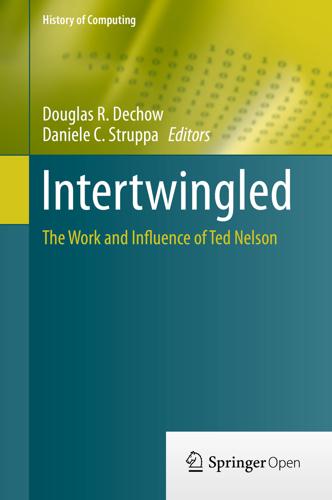
Intertwingled: The Work and Influence of Ted Nelson (History of Computing)
by
Douglas R. Dechow
Published 2 Jul 2015
There have not always been conferences like this one held in Nelson’s—or Engelbart’s—honour. Although Engelbart, as an engineer with a prestigious post at SRI, had more basis for conversation with the computing mainstream, what he was doing was not seen as “science” back then either. As the Head of Engineering at SRI told a young Bill Duvall (and Duvall later recounted to me), “You don’t really think what they’re doing up there is science, do you?” (Duvall 2011, personal communication). That kind of resistance has dogged Nelson for many years. People didn’t understand what he was going on about, and neither Ted nor his vision seemed to fit in any one nice explanatory box.

The System: Who Owns the Internet, and How It Owns Us
by
James Ball
Published 19 Aug 2020
The two institutions were joined with a 50 Kilobits per second connection – a connection around 1/374th the speed of an average modern US broadband account.1 They decided the first thing to do was just use the technology as it was intended, to log in to the other computer remotely. Professor Leonard Kleinrock,2 UCLA’s head of the project, later recalled how researchers at both ends of the communication were simply trying to send and receive the simple command: ‘login’. ‘We had Charley Kline at our end, we had Bill Duvall up at SRI. And just to make sure this thing worked, they had a telephone connection. Now the irony here is just dripping. We were using a telephone to prove our [technology] which is about to displace the telephone network, so they could communicate. ‘The point is Charley typed the L, and he asked, “Will you get the L?”
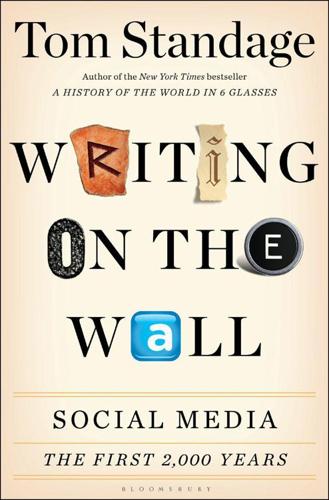
Writing on the Wall: Social Media - the First 2,000 Years
by
Tom Standage
Published 14 Oct 2013
They had quotes ready for history.” The message that would be sent along the link from UCLA to Stanford, however, was rather more mundane: it was simply the word “login,” which would enable Kline to log into the Stanford computer from his terminal at the UCLA computer. At about 9:30 P.M. Kleinrock called Bill Duvall, a young programmer at Stanford, to say that they were ready to begin the test. Kline typed an “L” on his terminal. Over the phone, Duvall confirmed that it had successfully traveled through the two IMPs to reach the Stanford computer. Kline then typed an “O.” Again, Duvall confirmed that it had been received.
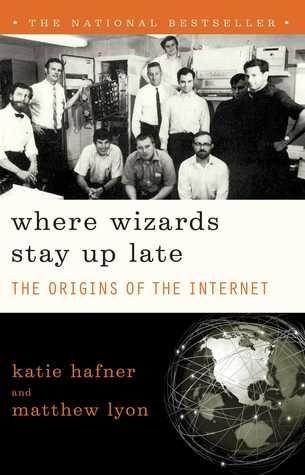
Where Wizards Stay Up Late: The Origins of the Internet
by
Katie Hafner
and
Matthew Lyon
Published 1 Jan 1996
But the Sigma-7 had been designed as a commercial processor, whereas the 940 was basically an academic device, a revolutionary time-sharing system first put together by a team of Berkeley researchers, later to be sold under the SDS nameplate. As a result, it was far more fun to program than the Sigma-7. Bill Duvall, an SRI researcher, spent about a month writing a clever program for the 940 that essentially fooled it into thinking it was communicating not with another computer but with a “dumb” terminal. A dumb terminal can neither compute nor store information; it serves only to display the most recent set of information sent to it by the computer to which it’s linked.
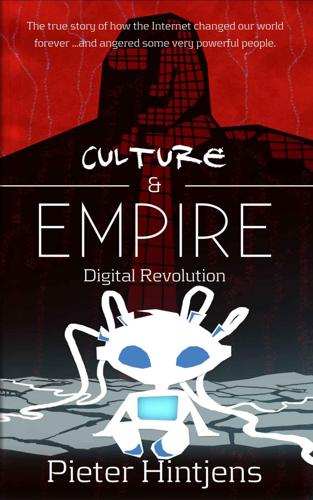
Culture & Empire: Digital Revolution
by
Pieter Hintjens
Published 11 Mar 2013
The document, simply called "RFC001", says: During the summer of 1968, representatives from the initial four sites met several times to discuss the HOST software and initial experiments on the network. There emerged from these meetings a working group of three, Steve Carr from Utah, Jeff Rulifson from SRI, and Steve Crocker of UCLA, who met during the fall and winter. The most recent meeting was in the last week of March in Utah. Also present was Bill Duvall of SRI who has recently started working with Jeff Rulifson. Crocker, Carr, and Rulifson are not household names. Steve Crocker and his team invented the Requests for Comments, or RFC series. These documents became the laws of the Internet, specifying every standard in a clear form that was freely usable by all.

Algorithms to Live By: The Computer Science of Human Decisions
by
Brian Christian
and
Tom Griffiths
Published 4 Apr 2016
And the text message began, on December 3, 1992, with cheer: Neil Papworth at Sema Group Telecoms wishing Vodafone’s Richard Jarvis an early “Merry Christmas.” The beginnings of the Internet were, somehow fittingly, much humbler and more inauspicious than all of that. It was October 29, 1969, and Charley Kline at UCLA sent to Bill Duvall at the Stanford Research Institute the first message ever transmitted from one computer to another via the ARPANET. The message was “login”—or would have been, had the receiving machine not crashed after “lo.” Lo—verily, Kline managed to sound portentous and Old Testament despite himself. The foundation of human connection is protocol—a shared convention of procedures and expectations, from handshakes and hellos to etiquette, politesse, and the full gamut of social norms.
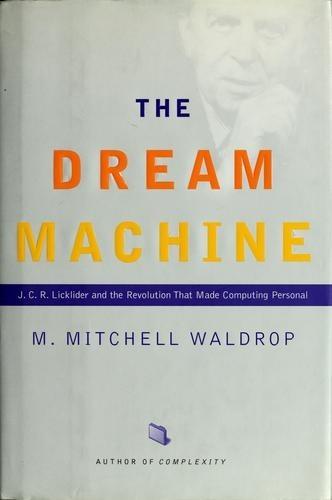
The Dream Machine: J.C.R. Licklider and the Revolution That Made Computing Personal
by
M. Mitchell Waldrop
Published 14 Apr 2001
Kay himself, for example, designed a "paint" program so that the kids who would one day use his Dynabook could sketch their own computer graphics. His design was implemented by Steve Percell, a student intern from Stanford, and then integrated with a line-drawing system developed by PARC's John Shoch. Meanwhile, Bill Duvall of the paLOS team devised a "mini-NLS" that could be used for text processing on the terminals. Bob Shur built an animation system. Kay and paLOS's Jeff Rulifson began kicking around ideas for "iconic" programming languages, which would allow kids to write their programs in terms of graphical symbols instead of as text.